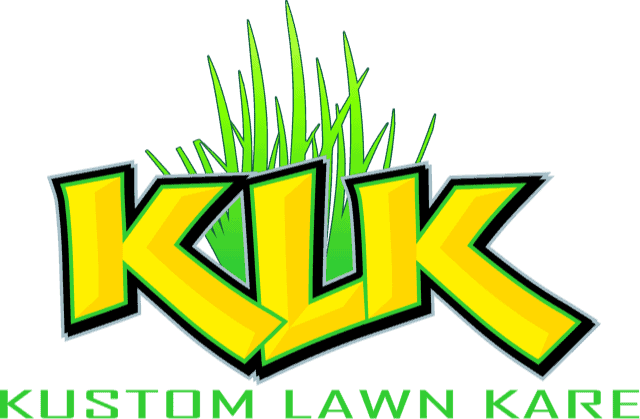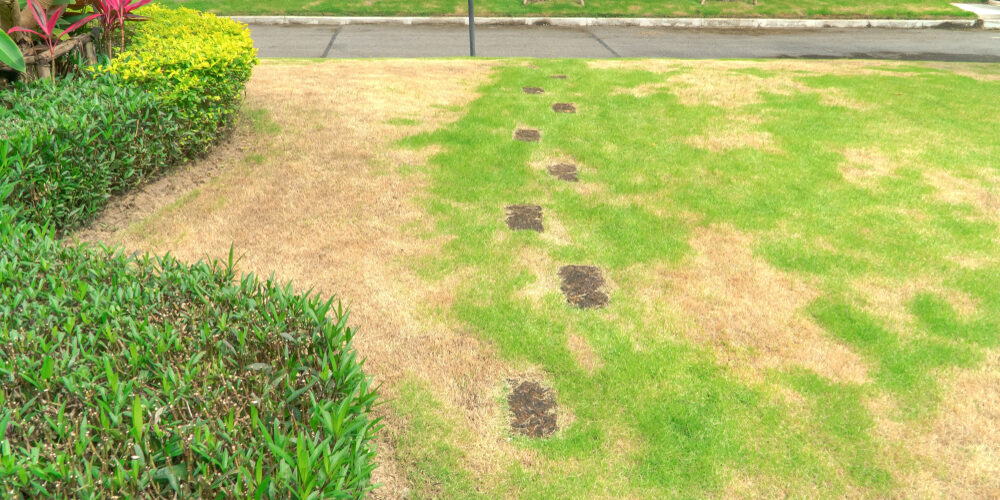This week’s blog will discuss specific types of issues that may show up this spring season on your lawn, things such as dead patches or the dreaded bald spots.
Some people do not know how to handle these types of issues on their lawn, so we figured we should write a blog to help them out! Especially since the spring and summer seasons are when these certain types of issues will arise.
We want to offer viable solutions in this blog so that you can fix these issues on your own. However, remember if you cannot make the necessary repairs on your own or lack the skills and resources, Kustom Lawn Kare is here to help!
The blog today will hopefully provide you with the causes of these issues, the different options when it comes to repairing or fixing these problems, as well as why you should let professionals help,
What causes bald patches or dead spots on my lawn?
A long list of things can cause bald patches, dry patches, and dead spots on your lawn. Here is a partial list of the most common causes:
- Rust
- Brown Patches
- Thatch buildup
- Compacted Soil
- A lot of Nitrogen
- Intense Humidity
- Pet Urine
- Grub Damage
- Animal Digging
Like we stated before the list, the truth is that there are still more things that could cause these issues on your lawn. The most common problems also have a common variable. We are talking about moisture. All those things that cause bald patches, dry spots, or dead spots have to do with the volume of moisture that is on your lawn (or turf, depending on what you have on your property).
The core reason for that is the fungi. Fungi need water/moisture so they can have the ability to target and ultimately destroy your lawn. So, the more moisture you have on your property, the more often things such as brown patches and rust will occur. Which we all know will lead to dead spots and bald patches and kill your lawn.
How do I spot brown patches on my lawn?
The good news is brown patches are very simple to point out and find. The reason they are so simple to spot due to the unique details that help identify them. For example, more often than not, brown patches are circular. The patches themselves differ in size and could be as big as several feet in diameter or as small as a few inches.
The way brown patches easily fool us is because the patches actually look like our healthy grass in some instances. To determine the difference, however, we have to inspect the patch. If you find a ring of dead or thin grass around the patch, that is a brown patch. That ring around it lets us know that the brown patch was there for a long time and went unnoticed and undetected.
What are some options I have for fixing dead patches or bald spots on my lawn?
There are a couple of different ways to potentially fix the issue of dead patches or bald spots on your lawn. The remaining part of the blog will be dedicated to solutions for these issues. These are the first steps you can take in repairing bald spots and dead patches on your lawn:
- Clear your property with a spring clean-up!
- Remove debris, dead grass, and turf (if u have)
- Aerate your soil. Make it breathe.
- Overseed (Put grass seed over the loosened soil.)
- Fertilize.
- Have a mulching service done.
- Water the grass.
The breakdown above is the services and things you should have been doing to your lawn annually, especially now that summer is almost here. With that being said, those initial steps should end up fixing the dead patches on your lawn. If you have completed those steps and still have dead bald spots and dead patches on your lawn, you recommend that you try overseeding or seeding again until the issue is resolved.
This is a quick checklist for how to seed correctly:
- Cut the area surrounding the dead patch.
- Remove the dead patch. (shovel)
- Fill the hole with topsoil.
- Level the soil with your lawn.
- Smooth it out.
- Put a thin layer of seeds in the fresh new area.
- Rake and mix seeds with your topsoil.
- Cover seeds to allow moisture to stay locked in.
This process is another quick fix to restoring life in the area that the dead patch or bald spots were living. If your lawn is thin all around, it is recommended that you overseed your entire lawn and not just the area with bald spots or dead patches.
Can I overseed my lawn myself?
It is possible to overseed your lawn on your own. However, it is highly recommended you allow professionals do an overseeding service, especially because they usually will provide both an overseeding and aeration service together.
Since we already concluded that overseeding would help fix the issues of dead patches and bald spots on your lawn, we wanted to provide you with a step-by-step guide on how to overseed your lawn yourself:
- Remove leaves and debris.
- Rake. (if necessary)
- Spread seeds over your lawn.
- Spread half an inch of compost or topsoil on your lawn.
- Rake and mix seeds and soil into your lawn.
- Water the seeds. (morning and early afternoon)
- Water until seeds germinate.
- Seeds will sprout, then water normally.
- Fertilizer the lawn before summer starts.
We have provided multiple options and step-by-step guides on fixing the issue of dead patches and bald spots on your lawn. It is up to you to do your research and ask for professional help if you are not up for the task.
The process of fixing the issues are services that most professional companies offer, so hiring an expert to complete those services on your property will ultimately eliminate and prevent the issues from arising.
If you are a resident of Olean, Cuba, Cuba Lake, NY, or their bordering areas, you can call the professionals at Kustom Lawn Kare today!
Do not forget to ask us about our other lawn care and landscaping services as well!


